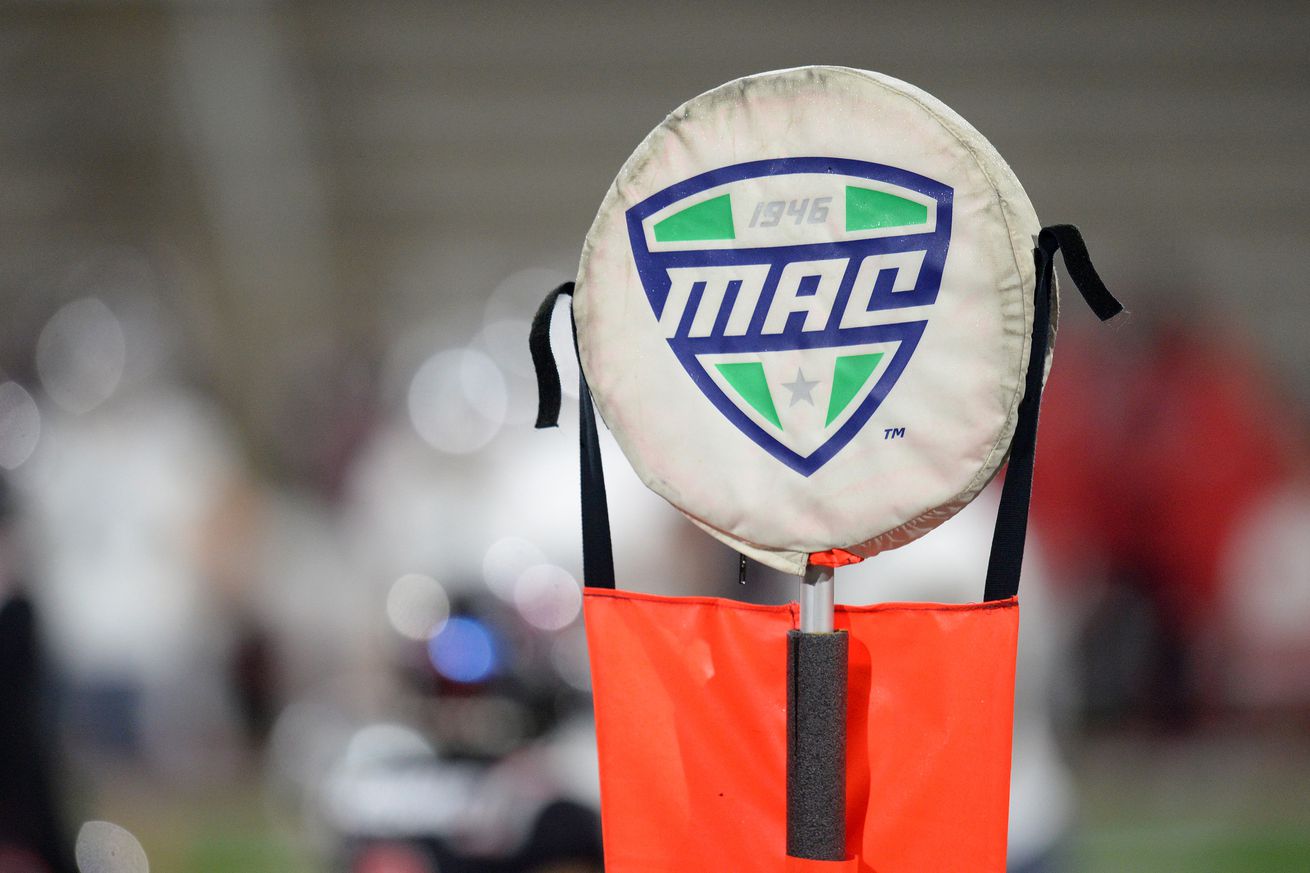
With NIU leaving the conference, it’s a good time to start looking around at who could be on the target sheet for expansion.
This time last week, NIU departed for the Mountain West as a football-only member. We still haven’t heard about what will happen to their other sports and how the MAC will deal with such a situation as of publication, but the assumption is the conference will largely remain true to their listed by-laws and kick out NIU as of 2026.
That would put the MAC at 12 full members once again starting in that 2026 season, but what if it was more?
We’ve spent the past week compiling a list of over a dozen schools which could fit the bill for MAC membership, and organizing them into distinct tiers of possibility. Some would be fits tomorrow, others would need some work. Others might need a lot of convincing, but all of them present intrigue.
Our list is based on prior knowledge of how the MAC likes to operate, emphasizing schools that would: join as full members, fit the conference’s regional print, have or be capable of producing Division I facilities, and prioritize a balanced student-athlete experience.
Without further ado: we present potential targets for expansion:
Tier 1: Safe Additions
Programs listed in the first tier are all “check the boxes” types. Every program has FBS facilities or plan to build them, every program is a current or future FBS member, and every program is within the geographic footprint of the MAC.
Western Kentucky University

Eric Canha-Imagn Images
- Location: Bowling Green, Kentucky
- Proximity: 249 miles (to Miami)
- Enrollment: 14,590 (as of fiscal year 2023)
- Endowment: $209.5 million
- Budget: $40.38 million (total revenue as of fiscal year 2023)
- NIL collective: Yes (Red Towel Trust)
The MAC flirted with WKU back in 2021, but were unable to seal the deal when it mattered. WKU checks the most boxes for the MAC, and the Hilltopper fanbase seems eager to move away from Conference USA, which looks completely different from the one they joined a decade ago. WKU brings a famously fun culture and competitive football and basketball programs right away while also staying within the general geographic footprint, making it the main attraction should the MAC expand— regardless of if rival MTSU comes with them or not.
Middle Tennessee State University
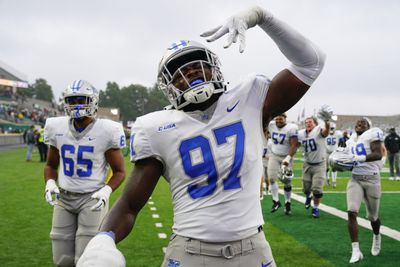
Michael Madrid-Imagn Images
- Location: Murfreesboro, Tennessee
- Proximity: 342 miles (to Miami)
- Enrollment: 20,540 (as of Spring 2024)
- Endowment: $127 million (as of 2022)
- Budget: $40.86 million (total revenue as of fiscal year 2023)
- NIL collective: Yes (Raiders Rising)
MTSU, like their rival WKU, was approached to join the MAC in 2021 and were very close to doing so. Unfortunately for the MAC, they got cold feet and withdrew from the running— which ultimately sunk WKU’s bid as well. Three years later, they’re still attractive as a potentially mobile candidate due to being an FBS-level team within the footprint. That said, the geographic fit isn’t perfect for them. They’d likely travel the most of any team if they joined, which makes staying in the south more comfortable for MTSU. The move makes sense if it’s a package deal with WKU, but as a solo entity, reception to a move could be pretty cold.
University of Delaware
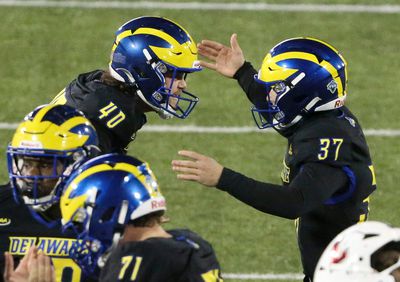
William Bretzger-Delaware News Journal / USA TODAY NETWORK
- Location: Newark, Delaware
- Proximity: 298 miles (to UMass)
- Enrollment: 18,812 (as of fiscal year 2023)
- Endowment: $1.78 billion
- Budget: $37.5 million (as of fiscal year 2025)
- NIL collective: Yes (302 Collective)
Delaware has been looking for an FBS home for years after dominating the CAA, and were even briefly linked with the MAC as a potential expansion option. UD ultimately chose to go with Conference USA in 2023, with the intent to play at the FBS level starting in 2025. The move was made prior to UMass’ invitation to the MAC, however, so there is an avenue open to persuade UD administrators to reconsider their decision. It’s tempting, especially when conference travel for all sports is taken into account. The question would be if exchanging New Mexico, Texas and Florida for Indiana, Michigan and Ohio is worth the headache of exit fees.
Missouri State University
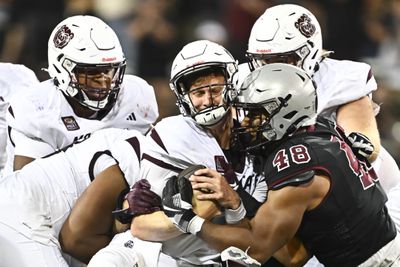
Photo by Tommy Martino/University of Montana/Getty Images
- Location: Springfield, Missouri
- Proximity: 438 miles (to Miami)
- Enrollment: 25,038 (as of fiscal year 2024)
- Endowment: $193 million (as of 2021)
- Budget: $31 million (as of 2024; expected to jump to $37 million in 2025)
- NIL collective: No (does partner with Opendorse for individual NIL deals)
Missouri State is expected to make the jump alongside Delaware to Conference USA play in 2025, and is expected to take their eligible sports with them from the Missouri Valley Conference. (Beach volleyball is already a CUSA affiliate member.) MOST does have background with MAC administrators, previously an affiliate member of the MAC as an affiliate in men’s swimming/diving. They could be an intriguing cheap fit with an FBS-ready investment level if the conference tried convincing them to re-neg on CUSA. However, they’d be the most southwestern institution in the MAC by some distance, which could cause some issues down the line.
Tier 2: Potential Additions
Programs in this tier are FCS programs which fit most of the benchmarks. Programs here are within the geographic footprint and have either indicated their willingness to play FBS football, been identified as a potential FBS member in the past or could be capable of doing so with available resources.
Eastern Kentucky University
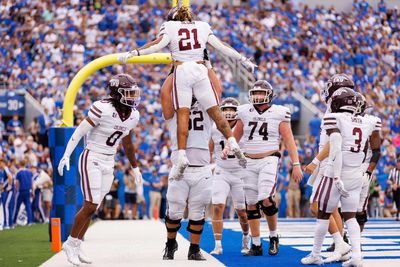
Jordan Prather-Imagn Images
- Location: Richmond, Kentucky
- Proximity: 145 miles (to Miami)
- Enrollment: 12,726 (as of fiscal year 2023)
- Endowment: $78 million (as of fiscal year 2022)
- Budget: $23.09 million (total revenue as of 2023)
- NIL collective: Yes (The Maroon Fund)
EKU recently finished in the final FCS Top 25 poll this past week, and has been on a steady ascent over the last handful of seasons. They were a finalist for Sun Belt expansion back in 2015 before Coastal Carolina’s selection and would compete right away in the MAC. However, their budget and facilities would be near the bottom of the league in terms of capacity and investment (though Alumni Coliseum has a lot of character and future renovations planned). EKU is currently a member of the newly-formed United Atheltic Conference, which spans from Alabama to Utah. A move to the MAC could bring stability and a tighter geographic footprint.
Austin Peay University
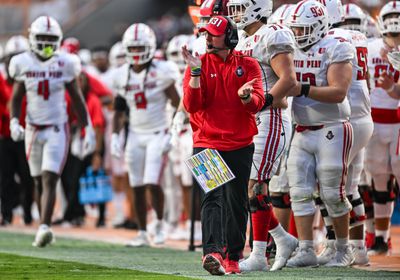
Photo by Bryan Lynn/Icon Sportswire via Getty Images
- Location: Clarksville, Tennessee
- Proximity: 314 miles (to Miami)
- Enrollment: 10,439 (as of Spring 2024)
- Endowment: N/A
- Budget: $22.85 million (total revenue as of 2023)
- NIL collective: Yes (For The Peayple)
Austin Peay hasn’t been afraid to schedule tough buy games to help secure funds for facility upgrades, and in fact, had a stated mission of reaching the FBS by 2025. This led to them joining the United Athletic Conference, an FCS league made up of former WAC and A-SUN members with the stated goal of being an FBS conference. Well, 2025 is here, but the optimism of the UAC plan hasn’t come to fruition. APU’s history in sports is pretty mundane to this point, especially in football, but the school has a lot of ambition, is in the general budget range compared to MAC programs and an intriguing geographic fit to give the MAC an in to the southern pipelines.
University of Rhode Island
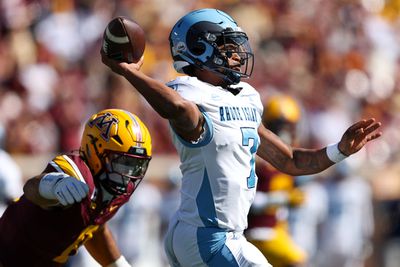
Matt Krohn-Imagn Images
- Location: Kingston, Rhode Island
- Proximity: 116 miles (to UMass)
- Enrollment: 14,654 (as of fiscal year 2021)
- Endowment: $203 million
- Budget: $35.64 million (total revenue as of 2023)
- NIL collective: Yes (Rhode to Excellence)
UMass, as a recent addition, will certainly have opinions about schools to add to the MAC in light of NIU’s departure, and Rhode Island would be a very intriguing program to advocate for. URI has an endowment and budget rivaling the top teams in the MAC and enrollment numbers on par with most of the membership. They also field a rising football program and competitive basketball teams, the latter of which would raise the MAC’s profile right away. URI might be more ready for a jump than they realize— but it would take leaving an attractive basketball conference (Atlantic 10) and major renovations to their football stadium (which seats just over 6,000) to do so.
Illinois State University
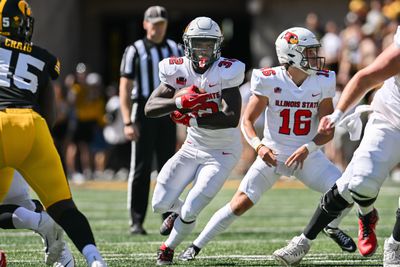
Jeffrey Becker-Imagn Images
- Location: Normal, Illinois
- Proximity: 222 miles (to Ball State)
- Enrollment: 21,546 (as of fall 2024)
- Endowment: $224.7 million (as of 2024)
- Budget: $29.88 million (as of fiscal year 2023)
- NIL collective: Yes (Empower the Nest)
Illinois State has been one of the Missouri Valley’s most competitive football programs and profiles quite nicely as a natural replacement for Northern Illinois. They have a higher budget ($29.88M to $24,157,870), a larger basketball stadium (13,100 seats to 10,000) and a higher endowment fund ($224M to $99.8M) than NIU, and campus is within three hours of Chicago, preserving the recruiting area and Central time zone for future television negotiations. It’s not perfect though; the football stadium is very small (13,000) and their current geographic footprint in the MVC is more ideal for travel in all sports. It would take some convincing, and ISU might not feel ready for a jump.
Tier 3: Unlikely Additions
Programs in this tier fall in multiple categories. Programs in this tier are all FCS members capable of making the jump to FBS fairly easily, but have extenuating circumstances which would potentially prevent adding them to the MAC.
North Dakota State University
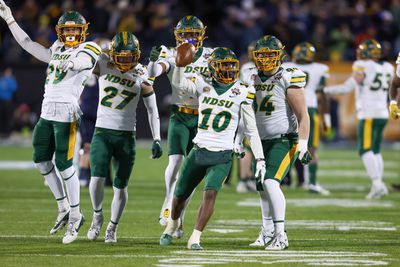
Photo by George Walker/Icon Sportswire via Getty Images
- Location: Fargo, North Dakota
- Proximity: 873 miles (to Ball State)
- Enrollment: 12,242 (as of 2024)
- Endowment: $464.2 million (as of Dec. 2023)
- Budget: $32,377,629 (as of fiscal year 2023)
- NIL collective: Yes (The Green and the Gold Collective)
South Dakota State University
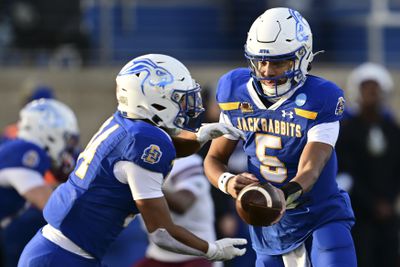
Photo by Tommy Martino/University of Montana/Getty Images
- Location: Brookings, South Dakota
- Proximity: 853 miles (to Ball State)
- Enrollment: 12,065 (as of fall 2024)
- Endowment: $215 million (as of fiscal year 2022)
- Budget: $27,778,456 (as of fiscal year 2023)
- NIL collective: Yes (Jacked NIL)
University of North Dakota
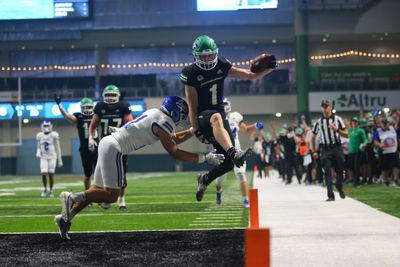
Photo by Jacob Kish/Icon Sportswire via Getty Images
- Location: Grand Forks, North Dakota
- Proximity: 951 miles (to Ball State)
- Enrollment: 14,172 (as of fall 2024)
- Endowment: $422.1 million (as of fall 2024)
- Budget: $33,377,645 (as of fiscal year 2023)
- NIL collective: Yes (The 1883 Collective)
University of South Dakota
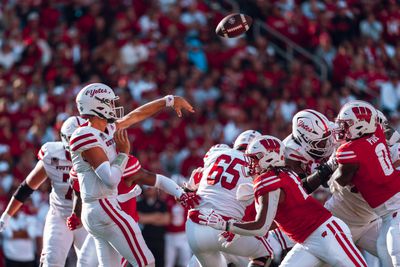
Photo by Ross Harried/NurPhoto via Getty Images
- Location: Vermillion, South Dakota
- Proximity: 739 miles (to Ball State)
- Enrollment: 7,095 (as of fall 2023)
- Endowment: $327 million (as of fiscal year 2022)
- Budget: $23,147,916 (as of fiscal year 2023)
- NIL collective: Yes (Pride of the Western Plain)
We’re going to lump all of the Dakota schools together here, since the arguments for and against them are largely similar.
First, the pro argument, which there’s only one: these schools are really, really good at football. That is basically it.
Second, all of the cons: These schools aren’t going anywhere. FBS conferences can salivate over locking in even one of these schools all they want, but the biggest thing keeping the Dakotas in FCS, besides the significant financial risks and requirements involved in upgrading, is that they are a package deal.
Each of these schools is each other’s biggest rival; at a level of play where rivalry games make up the majority of annual attendance, often to a ludicrous degree, splitting them up would be financial suicide. Any FBS conference looking to bring on one Dakota school would need to be willing to bring on all four, and that’s a near impossibility.
There’s also an additional factor at play: the Missour Valley Football Conferece and Big Sky are, for all intents and purposes, the Big Ten and SEC of the FCS. They account for, combined, the division’s most successful and well-attended programs, and are the division’s biggest moneymakers. Breaking these conferences up is tantamount to suggesting you could easily break up the Big Ten or SEC. This is why, paradoxically, targeting the middle two quarters of these conferences is the smarter idea, rather than the top echelon. The MVFC has a lot of contender programs who are frequently good, but can’t break the Dakota Ceiling; these programs, who frequently also have FBS Tier 2 caliber budgets and endowments, would love to get the chance to shine.
Tier 4: Rhetorical Additions
Programs in this tier are largely hypothetical. Programs in Tier 4 are imperfect fits, whether because of geography or available budget resources, and come from several different levels of NCAA play. These are best read as desperation heaves which have intrigue if the program is willing to invest in a jump.
Youngstown State University
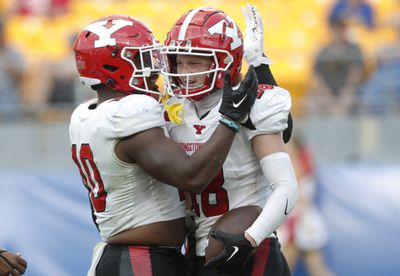
Charles LeClaire-Imagn Images
- Location: Youngstown, Ohio
- Proximity: 50 miles (to Akron)
- Enrollment: 12,164 (as of fall 2024)
- Endowment: $321.5 million (as of fall 2024)
- Budget: $20,275,711 (as of fiscal year 2023)
- NIL collective: Yes (The Penguin Collective)
Our first look here is a program you would think would maybe clock in higher than the bottom tier, but Youngstown State is a bit of a “too much of a good thing” case. Even though it fits the financial profile of a MAC school, and its football program clocks in at third on the all-time FCS title list, adding the Penguins would mean three programs within a 50-mile radius. YSU would also be very much the odd duck between its new neighbors of Akron and Kent State, butting in between an already historic and long-running derby. This would only really make sense if you booted one or both of Akron and/or Kent State out, which would be controversial to say the least.
University of Montana
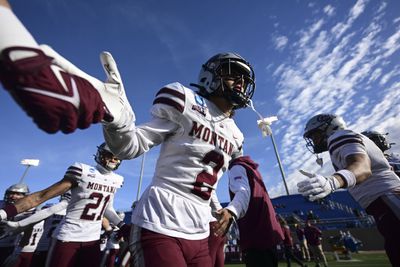
Photo by Tommy Martino/University of Montana/Getty Images
- Location: Missoula, Montana
- Proximity: 1,817 miles (to Ball State)
- Enrollment: 10,811 (as of fall 2024)
- Endowment: $257 million (as of fiscal year 2023)
- Budget: $26,487,487 (as of fiscal year 2023)
- NIL collective: Yes, multiple (The Griz NIL Exchange; Good Ol’ Grizzlies)
Montana State University
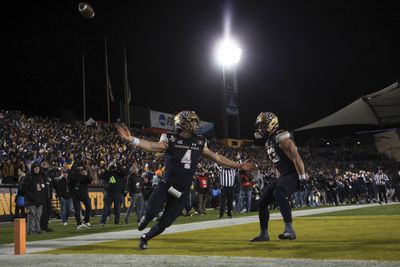
Photo by Justin Tafoya/NCAA Photos via Getty Images
- Location: Bozeman, Montana
- Proximity: 1,618 miles (to Ball State)
- Enrollment: 17,144 (as of fall 2024)
- Endowment: $264 million (as of fiscal year 2023)
- Budget: $28,393,169 (as of fiscal year 2023)
- NIL collective: Yes (BobcatCollective)
Our prior arguments about the Dakotas also goes for the Montanas, but arguably even more so; the Brawl of the Wild accounts for a gargantuan percentage of each program’s annual attendance and is the biggest game of the year for both of them. They also have longstanding rivalries with Idaho and Eastern Washington, two programs that are not looking to move up anytime soon. Losing those rivalries would be costly in multiple ways.
The Montanas are also the farthest West of any of the remainder candidates by nearly a thousand miles, which makes it a no-go right off the bat.
There is no doubt they have the football pedigree to be a member; their other sports are also decent and the budget, enrollment and endowments all line up with the MAC as well. But it’s really a pipe dream. The only reason you could feasibly put them here is in a scenario where you go buck-wild with expansion and pair the Montanas with one of the other Dakota rivalries as a travel partner.
Grand Valley State University
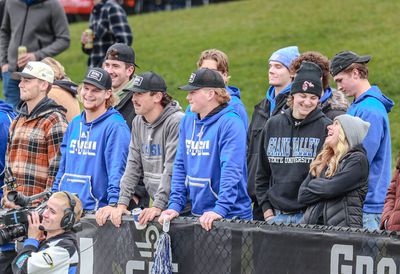
Lenny Padilla/Sentinel Contributor / USA TODAY NETWORK via Imagn Images
- Location: Allendale, Michigan
- Proximity: 101 miles (to Western Michigan)
- Enrollment: 22,011 (as of fiscal year 2024)
- Endowment: $209 million
- Budget: $18,069,096 (total revenue)
- NIL collective: Yes (AHEAD)
Ferris State University
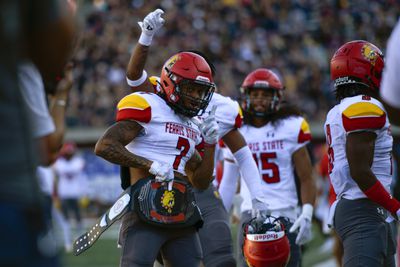
Photo by Tanner Ecker/University of Montana/Getty Images
- Location: Big Rapids, Michigan
- Proximity: 42 miles (to Western Michigan)
- Enrollment: 9,959 (as of fiscal year 2024)
- Endowment: $117 million
- Budget: $8,642,414 (total revenue)
- NIL collective: No
“Hey wait a second, these are Division II schools!”, you might say. And yes, it’s true, Ferris State and Grand Valley State are indeed two levels below the FBS, sitting in the ultra-competitive GLIAC.
However, they fit the geographic profile and are ultra-competitive in football. GVSU in particular has been building up their athletic facilities— which were already pretty close to FCS level even before they started— as part of their overall Master Plan, with $6.7 million of funds going to Lubbers Stadium, a $3M wrestling facility and $14M of expected investment in additions to their fieldhouse over the next decade.
GVSU is also no joke in athletics, fielding a perennial Top 10 football program which has made multiple deep Playoff runs and one of Division II’s most dominant women’s soccer teams (seven titles since 2009) and track/cross-country programs (16 between men’s and women’s since 2009). Ferris State, which sponsors 15 varsity sports for a university with 9,000 enrollees, isn’t too shabby either, with three of the last four national titles in football and a 2018 men’s national basketball title.
Hypothetically, an increased media share would allow these programs to ramp up their programs even more and get to FBS level in most sports within five years of a jump, which could offset extremely small athletic budgets and initial competitive struggles. However, there would certainly be objections raised to their potential addition, as adding GVSU and Ferris would put the three Michigan MAC schools under threat in recruiting— not to mention adding Grand Rapids isn’t exactly winning over any media negotiations. Two divisions might be too large a jump, but the possibility is certainly intriguing.
Duquesne University
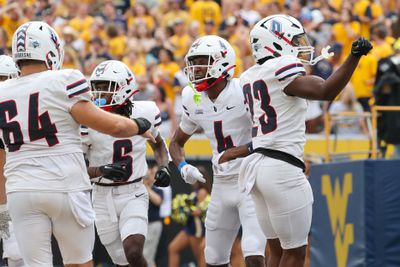
Photo by Frank Jansky/Icon Sportswire via Getty Images
- Location: Pittsburgh, Pennsylvania
- Proximity: 101 miles (to Kent State)
- Enrollment: 5,226 (as of fall 2023)
- Endowment: Estimated to be approximately $472 million (private institution)
- Budget: Estimated to be approximately $24 million (private institution)
- NIL collective: No (does partner with NIL Store on an individual basis)
Our data is somewhat limited about Duquense, as it is a private school, but since these are more hypothetical picks, it’s worth discussing as it concerns travel partners. With NIU gone, if the MAC decides to concentrate their efforts eastward, targeting a big city all the schools share a connection to would certainly help. The Dukes have been co-champions of the Northeast Conference three times in the last five seasons and made the Playoffs in 2023, while the basketball programs compete in the prestigious Atlantic 10 Conference (which UMass and Rhode Island also play in currently.)
There’s some problems here; Duquense currently only sponsors six men’s sports (with no baseball or wrestling program), while the 11 women’s sports do not include gymnastics or softball. Athletic facilities are also Division II-level at current and would need a lot of help to bring up to FBS standards. It’s a nice thought, but doesn’t go further than that.
University of New Hampshire
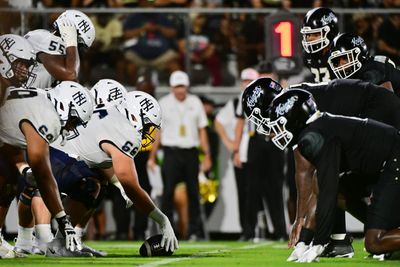
Photo by Julio Aguilar/Getty Images
- Location: Durham, New Hampshire
- Proximity: 132 miles (to UMass)
- Enrollment: 13,679 (as of fall 2023)
- Endowment: $475.1 million (as of fiscal year 2023)
- Budget: $34,460,142 (as of fiscal year 2023)
- NIL collective: No (does have partnership with Influxer on an individual basis)
New Hampshire is familiar to many lovers of college football. The Wildcats were a perpetual FCS party-buster in the 2000s and 2010s and have graduated some big coaching names from their program, namely Chip Kelly and Ryan Day. They’re not as dominant as they once were, but they’re still very competitive in football in a cut-throat Coastal Athletic Conference at the very least. They’d make a lovely travel partner for UMass and Buffalo, and currently have a budget and campus profile that is commensurate to most MAC programs.
As with Duquesne, the major problem here is lack of sports and facilities; UNH does not sponsor baseball, softball, wrestling or gymnastics currently, which are all pillar programs for the MAC.
Marshall University
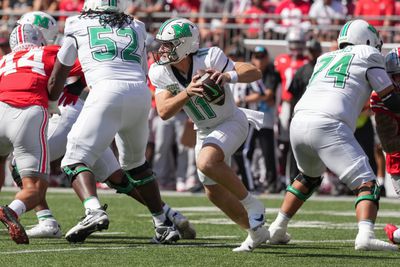
Photo by Jason Mowry/Getty Images
- Location: Huntington, West Virginia
- Proximity: 81 miles (to Ohio)
- Enrollment: 11,252 (as of fall 2024)
- Endowment: $201 million (as of fiscal year 2022)
- Budget: $40,811,277 (as of fiscal year 2023)
- NIL collective: Yes (The Thunder Trust)
You might ask what Marshall is doing here as an FBS member instead of up in Tiers 1 or 2. Well, simply put, there is a complicated relationship between Marshall and the MAC, with two separate, very public divorces. The last time Marshall left in 2005, they left the MAC over competitive concerns and lack of bowl access. They’ve since moved from Conference USA to the Sun Belt, which is arguably a more prestigious conference at this point in time.
It’s a new era now, however, and they check all the boxes the MAC would want in a program. The nostalgic appeal could be enough to make the conference attractive in future media deals. It would be a tough ask, but the restoration of several old rivalries could further solidify the MAC’s incredibly strong regional identity. It would take a lot to bring them back, however, and there is probably no real urgency to do so on Marshall’s part, especially as the SBC media deal is currently friendly to its teams. This is best thought of as a pipe dream.